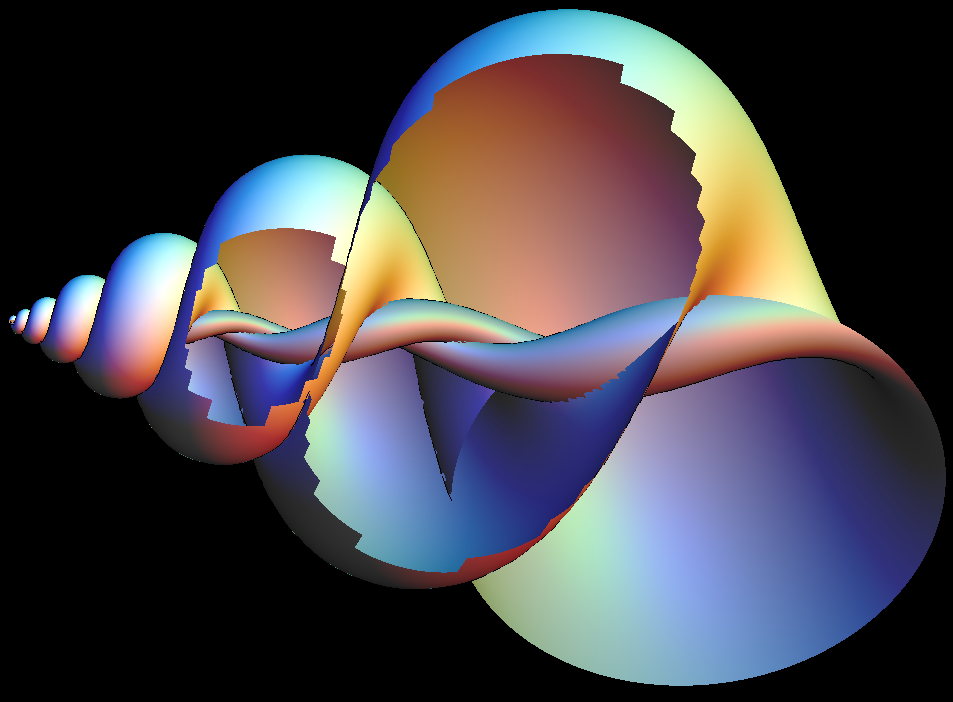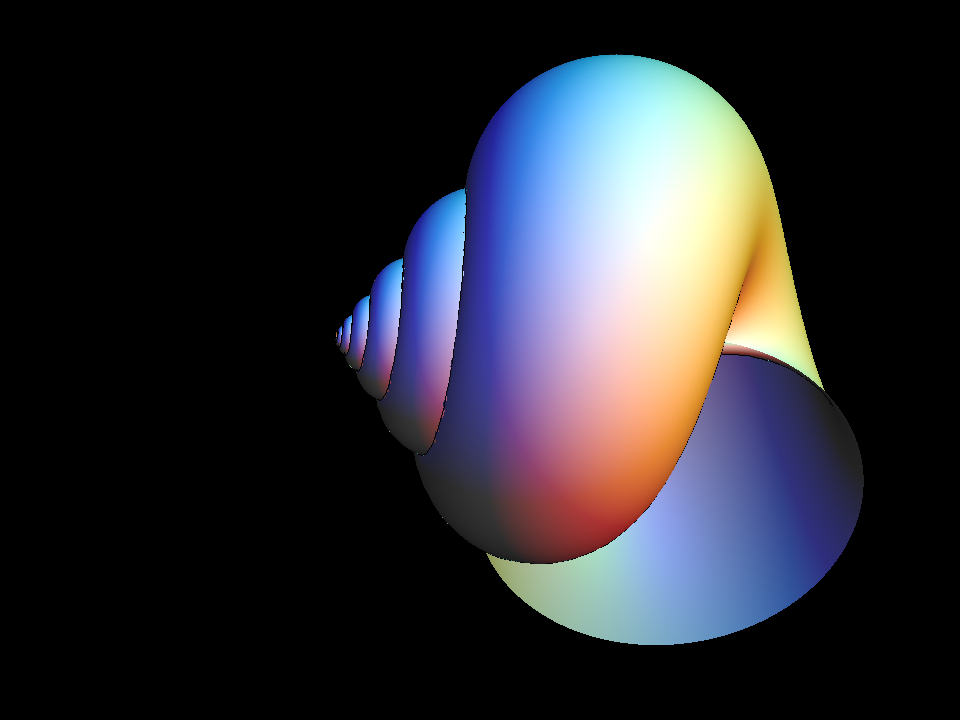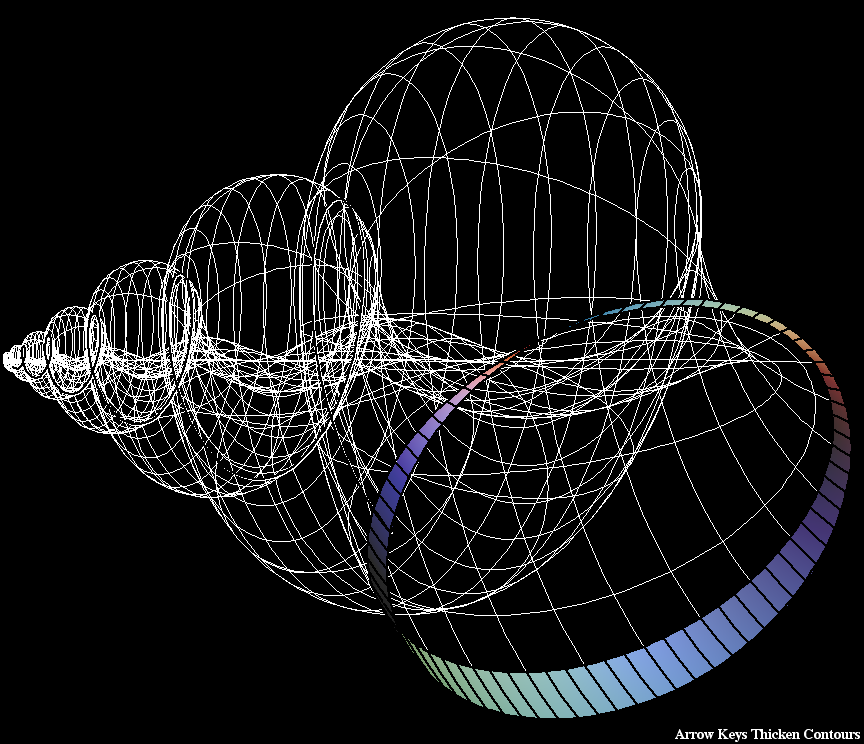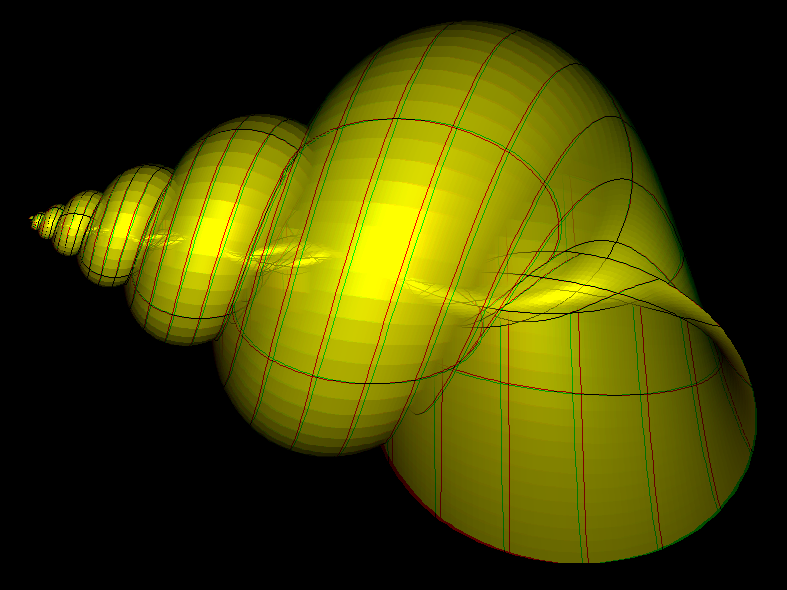




About Snail Shell Surfaces Traudel Karcher These snail-like surfaces are included for their entertaining shapes; try making one of your own. Note that a snail is constructed as a one-parameter family of curves C (u), depending on one of the surface parameter u, where the curve C (u) pro jects onto the circle of radius r := s (aa + bb cos(u)) about the origin in the x, z -plane; in fact it is given parametrically by: x := r cos(vv) z := r sin(vv) y := dd(1 − s) + s bb sin(u) where the variable vv parameterizing C (u) is given in terms of the second surface parameter v by vv := v + (v + ee)^2/16. The variable s is a function of v and the parameters cc and ee: s := exp( −cc vv). It scales the diameter of the opening of C (u), while the parameter dd stretches in the z-direction. (The snail may not close nicely at the top after parameter changes. The quadratic term in the definition of vv can be used to close the snail if one also adjusts vmax by experiment.) The parameter ee controls the size of the opening — the default is ee = −2. Make only small changes to cc, and keep bb ≥ aa.